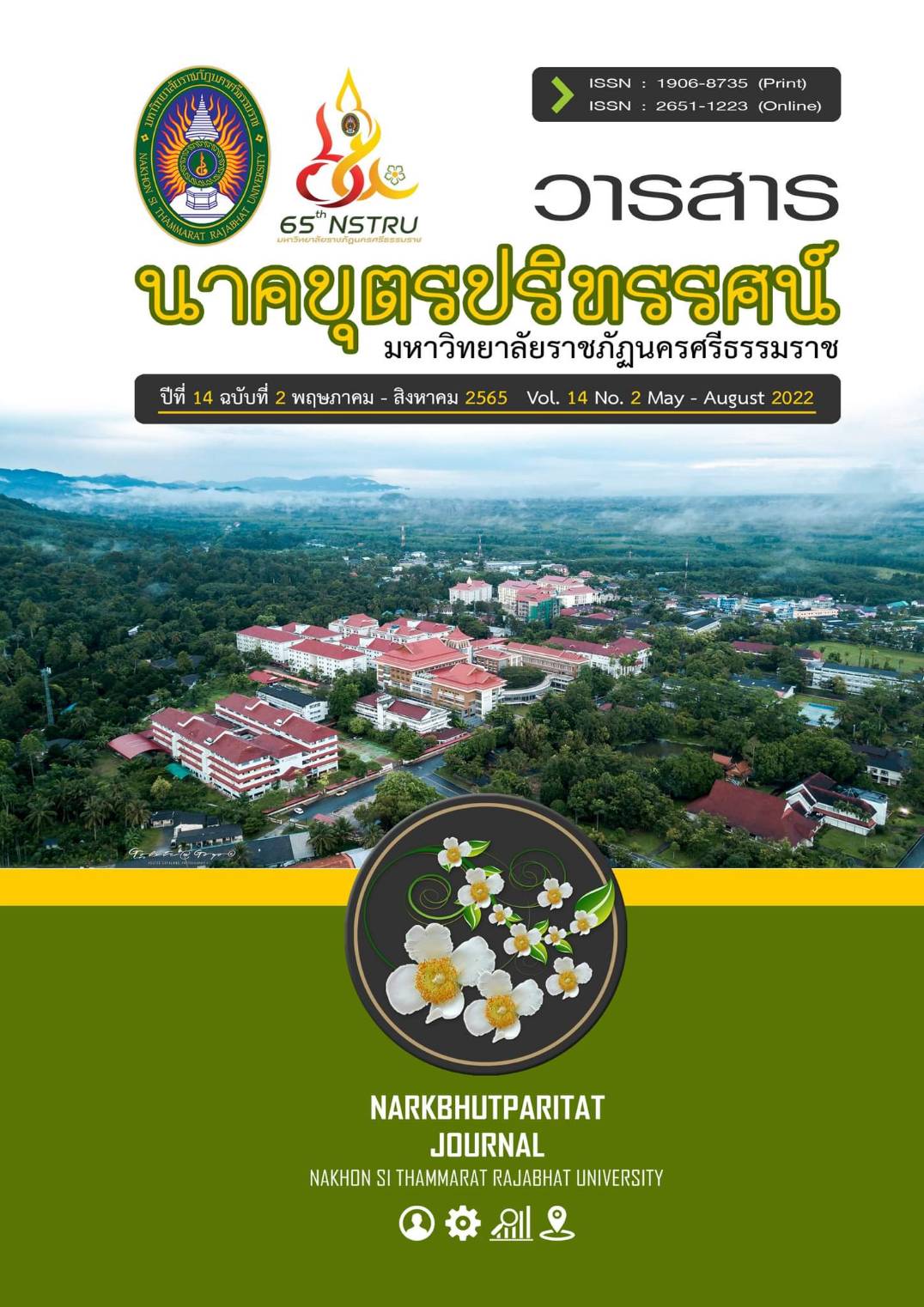Roles of Local Leaders and People's Cooperation in Reducing Emissions Carbon Dioxide from the Transportation Sector of Hua Sai Subdistrict Municipality, Nakhon Si Thammarat Province
Main Article Content
Abstract
This research aims to study the role of local leaders and people's cooperation in reducing carbon dioxide emissions from the transportation sector of Hua Sai Subdistrict Municipality, Hua Sai District, Nakhon Si Thammarat Province. It used data collection methods and field data collection. The informants consisted of 367 people and government officials of Hua Sai Subdistrict Municipality, Hua Sai District, Nakhon Si Thammarat Province. The results showed that 1) most of the sample population had opinions about the role of local leaders in reducing CO2 emissions from transportation to mitigate global warming at a high level because the local government has a policy of government involvement in planning and managing CO2 emissions from the transport sector. 2) people's behavior in reducing carbon dioxide emissions from the transport sector of the Hua Sai Subdistrict Municipality Nakhon Si Thammarat Province is at a very good level due to awareness and participation in reducing CO2 emissions from the transport sector can be a guideline to reduce the amount of CO2 emissions from the transportation sector of Hua Sai Subdistrict Municipality which is the main cause of environmentally friendly greenhouse gas emissions.
Article Details

This work is licensed under a Creative Commons Attribution-NonCommercial-NoDerivatives 4.0 International License.
References
Bodansky, D. (2016). The Legal Character of the Paris Agreement. Review of European, Comparative and International Environmental Law, 25(2), 142-150.
Cronbach, L. J. (1970). Essentials of psychological testing. (3rd. ed.). New York: Harper & Row.
Chunhasri, J. (2013). Carbon Footprint Reduction Behavior. Academic Services Journal, 24(3), 82-93. (in Thai)
Energy Policy and Planning Office, Ministry of Energy. (2020). Carbon Dioxide (CO2) Emissions from Energy Consumption in 2020. Retrieved 2020, December 31, from http://www.eppo.go.th/index.php/th/energy-information/situation-co2/per-year?orders[publishUp]=publishUp&issearch=1 (in Thai)
Kuakate, T (2017). Paris Agreement: The New Paradigm of Climate Change Law. Ramkhamhaeng Law Journal, 6(2), 29-52. (in Thai)
Savaresi, A. (2016). The Paris Agreement: A New Beginning?. Journal of Energy &
Natural Resources Law, 34(1), 16-26.
Simachaya, W. (2021). Opportunity for Thailand with a carbon-free Economy. Retrieved 2021,
November 4, from https://www.tei.or.th/th/blog_detail.php?blog_id=86&fbclid=
IwAR1cow7_-lUtFTX9V5zaf98khrv5osXIpNX9ui33Xk-1_aHYbRxYrdKQN2Y (in Thai)
Thailand Greenhouse Gas Management Organization (Public Organization). (2011). Guideline for assessing corporate carbon footprint. (6th ed.). Bangkok: P2 design & print company limited (in Thai)
_______. (2016). Emission Factor. Retrieved 2019, March 28, from http://thaicarbonlabel.tgo.or.th/
admin/uploadfiles/emission/ts_822ebb1ed5.pdf (in Thai)
_______. (2019). Glossary and abbreviations on climate change and flue gas management.
(2nd. ed.). Bangkok: Thailand Greenhouse Gas Management Organization (Public Organization) (in Thai)
_______. (2021). Carbon Footprint Promotion Project of Local Administrative Organizations. Retrieved 2022, June 20, from https://shorturl.asia/06C54 (in Thai)
Yamane, T. (1967). Statistic: An Introductory Analysis. (2nd ed.). New York: Harper and Row.


